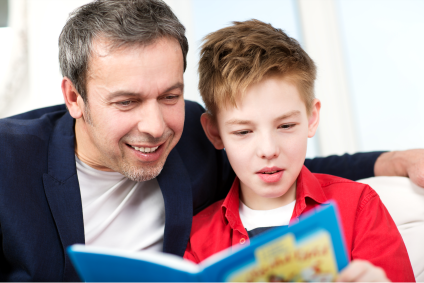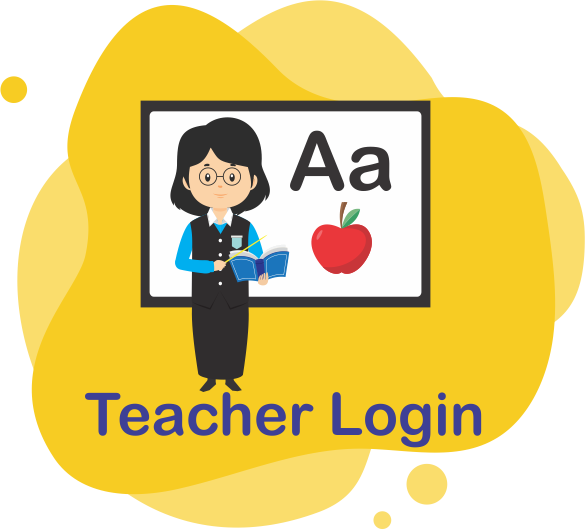Reading Program Workbook FAQ
Can I make copies, from the books, for my class?
Can I buy one book for my class and give the access codes for the games to my students?
I bought the Kindle book, how do I find the code for the app?
We are unable to use the online games and tools. Are the programs still useable?
Does my child need to do all three programs?
What's the difference between the three programs?
Is this reading program a cure for dyslexia?
Are your reading programs good for students on the autism spectrum?
Will this type of reading program help any child?
I am not a teacher. Can I still do this?
Will this help a child with APD?
What if I don't have 45 minutes a day?
Can we skip the first few easier lessons?
Can we skip around in the book?
Can I make copies, from the books, for my class?
Under copyright law, making copies is prohibited under all circumstances, including for institutional teaching purposes. We currently do not offer any licensing agreements, and it is our policy not to allow copying. In addition, it is our strong opinion that if students were to receive our programs in an unstructured manner, such as copied pages, they would not reap the benefits of a complete structured literacy program. Schools are encouraged to order through our bulk channel, where our programs can be obtained at a significant discount. To obtain a quote, register an account, selecting your role as "Admin". On your Admin Dashboard, scroll down to find the bulk quote button.
It is our firm policy to not release PDFs of our books.
We recommend using our web-app reading programs for remote teaching. For Blast Off to Reading, you should use the Lesson Slides web-app along with the Blast Off Premium PLUS app. For the I Can Fly Reading Program, use the I Can Fly Premium web-app, which contains the lesson slides. We currently do not have remote teaching tools for A Workbook for Dyslexics.
I bought the Kindle book, how do I find the code for the free Blast Off to Reading app?
When the app tells you where to look in the book for the code to enter, it is referring to the workbook, so look only at those images of the workbook pages that are in the Kindle book.
Can I buy one book for my class and give the access codes for the games to my students?
No. All apps that accompany a purchased book are only licensed to that single book and are only to be downloaded and used in conjunction with a single purchased book.
We are unable to use the online games and tools. Are the programs still useable?
Our programs are complete without the online tools. In fact, the online games and tools
were created a few years after the programs were published and in use.
The online games are strictly a fun way to reinforce material that was taught, which can be done with other resources.
Flash cards can be purchased or made with index cards, and dictations can be read to your student.
Does my child need to do all three reading programs?
No, each program is specifically created for a certain age group. They all start with the basics and get more difficult as they progress. For example, our program A Workbook for Dyslexics is for older students and adults. It follows the same sequence as Blast Off to Reading (for ages 7 to 13). Our I Can Fly Reading Program also follows the same sequence as the other programs; however, it only teaches about half of what the other programs teach. Therefore, if your young student finishes the I Can Fly program, you may want to continue with Blast Off to Reading. Note that since it will be starting over, we recommend that you do the first two review lessons before moving on to other rules and sounds. If your student has trouble with the reviews, you should take note and do the earlier lessons for those specific sounds or rules.
What's the difference between the three programs?
All three programs teach decoding in a cumulative,
repetitive manner. The I Can Fly Reading Program does not go into the depth that the other two programs go into, since it is for Kindergarteners and first graders. It will provide a
strong foundation to teach phoneme awareness, with sounds and rules to those children who may be dyslexic and stave off many problems that these children usually encounter.
Both Blast Off to Reading and A Workbook for Dyslexics will
also walk your student through the process of learning to read, in a more age-appropriate manner. For all programs,
the lessons will introduce a new sound or
rule, and then there will be exercises to review previous material as well as
new.
Is this reading program a cure for dyslexia?
Our reading programs are not a cure for dyslexia; they will help those with dyslexia overcome the difficulty in learning
to read, which is a byproduct of dyslexia. Dyslexia is not a disease, it is a condition that one is born with. A dyslexic student
needs a reading program that provides all of the sounds and rules along with constant repetition for reinforcement. Dyslexic children are
known to have poor memories (where language is concerned) and must have repetition. Using our program will not "cure" your dyslexic child,
but it will get them to read, and once they start reading they will become more proficient at it. In fact, MRI studies have shown
that after this type of treatment, tracking the brains of people, with and without dyslexia, during a reading task, the dyslexic brain seems
to function similar to those of the non-dyslexic control group. Although this is hard work, it is very encouraging to know that you can
help your child so dramatically.
Are your reading programs good for students on the autism spectrum?
While our reading programs were created primarily for dyslexia, we were contacted by many people who used our programs on students
who have autism spectrum disorder. Many of those who contacted us said the program they used was the only one that worked. This was a common theme. In addition,
they also said the software component was big hit with their children. It shouldn't be surprising that our programs work so well with children who love technology and (usually)
rules.
Will this type of reading program help any child?
Yes, our program can help any child (or even adult) improve their reading and spelling. For example, did you know that
the letter 'c' takes on an /s/ sound only if it is followed by and 'e', 'i' or 'y'? This type of information is not normally taught in
schools, and, although most people naturally pick this up, the dyslexic child needs to be taught this. Once you know all the spelling
rules and rule breakers, you can't help but become a better reader/writer.
I am not a teacher. Can I still do this?
You don't have to be a teacher to use our programs with your child (or anyone else for that matter).
If you are able to speak clearly and don't have a heavy accent (or if you share the same accent with your student)
you should be able to follow our programs with success. What matters most is that you have patience and are
consistent.
Will this help a child with APD?
Yes, it can help children with APD (Auditory Processing Disorder). Since dyslexia and APD are related, these children
are often diagnosed as dyslexic, and many dyslexic children are diagnosed as having APD. Either way, the student must learn to read in
the same manner (by using a systematic approach that covers all of the sounds, rules and exceptions of our language). A Reading Program
for Overcoming Dyslexia offers this approach, which your child or student can benefit from.
What if I don't have 45 minutes a day?
We suggest that you work with your child for 30-45 minutes each day. If you feel you can't do the minimum, then you may
want to look into hiring a tutor. Someone must sit with the child, they cannot do it on their own. It is preferred that the same person
administer the program (for consistency), however, when needed, you can enlist the help of older siblings, friends or other relatives to help
out. The program is very straight forward (even scripted) so that anyone can use it.
If your child doesn't have the time, due to too much homework being assigned, discuss this with your child's teacher (or guidance counselor)
and ask if homework can be limited. A good teacher will recognize that learning to read must occur before one can read to learn and will
accommodate you.
Can we skip the first few easier lessons?
The first few lessons may seem easy and can even be insulting to some children (or even adults who are going through
the program), however, they are important and should not be skipped. Learning to read and write is a gradual build up, it is necessary to
provide a good foundation. You may be surprised how many problems your child or student will have with these initial lessons.
Can we skip around in the book?
Do not skip around, the lessons are cumulative and build as you go. You can skip around to lessons that you've already
completed for reinforcement and review.
How long before we see an improvement?
Every child is different and will work at their own pace. From our experience, it could take between 3 months to a
year to complete any of our three programs. It all depends on how the programs are implemented. As for seeing an improvement, it really
depends on many factors.
We finished the program, what's next?
If your student has completed Blast Off to Reading
or A
Workbook for Dyslexics, the next step is to have your student read as much
as possible to gain fluency. It is recommended to use the
side-by-side reading
method, which you should have implemented after the long vowel lesson in the
program you used.
If your student completed the
I Can Fly Reading Program, you should also have your student read books
to you as described above, however, since all sounds and rules were not covered, you may want
to use Blast Off to Reading to complete their Orton-Gillingham
instruction. Since about 40% of Blast Off to Reading was covered in the
I Can Fly program,
we recommend you do the first two review lessons before
moving on to other rules and sounds (around lesson 20). If your student has trouble with the reviews, you should take note and do the
earlier lessons for those specific sounds or rules.
The Side-By-Side Reading Method

Once the lesson for long vowels is completed, it is recommended that the student read books of interest,
preferably at grade level (not current reading level) with a proficient reader (PR). To do this, we use The Side-by-Side Reading (or “partnered” reading) method. The importance of this cannot be understated. This is what bridges what was taught in this program to real life application and leads to fluency.
The child and proficient reader (PR) should sit next to each other (facing the same direction). If the PR is right-handed, they should sit to the right of the child.
The PR should use their index finger to point to each word, helping the student track and stay focused. When the student struggles with a word, the PR should give time for the child to work it out. After a few seconds, the PR should ask if the child needs help.
Often children want very much to decode the word and worry that the instructor is going to read it for them. On the other hand, many children want to be given the answer so that they don’t have to work. If the child needs help, block the sounds in the word, revealing sounds that were taught. If there is a sound
in the word that wasn’t taught, encourage the student to try to decode it based on context of the sentence and the sounds they can recognize.
If your student becomes frustrated, or this takes too long, simply read these words to them.
For example, if the word is “strangers”, show “ange”, “str” and “er”. You don’t need to do this in order. Sometimes, first showing sounds that are at the end of the word helps. For example: “adventure” – first block out all letters except for ‘ture’ (which = /chur/).
If the student is reading along, but reads a word incorrectly, the PR should double tap their finger. This non-verbal cue doesn’t break the flow, and the student will quickly learn what it means.
Often, students with dyslexia will take “the wild guess”. This is when they quickly guess, the word without decoding based on context.
Usually the guess is not correct. When this is done, the PR should double tap, forcing the student to try again.
If reading is slow and labored, the PR and student should take turns reading paragraphs.
Eventually, the student will read without finger guidance, and then, in time, they will be able to read independently.













